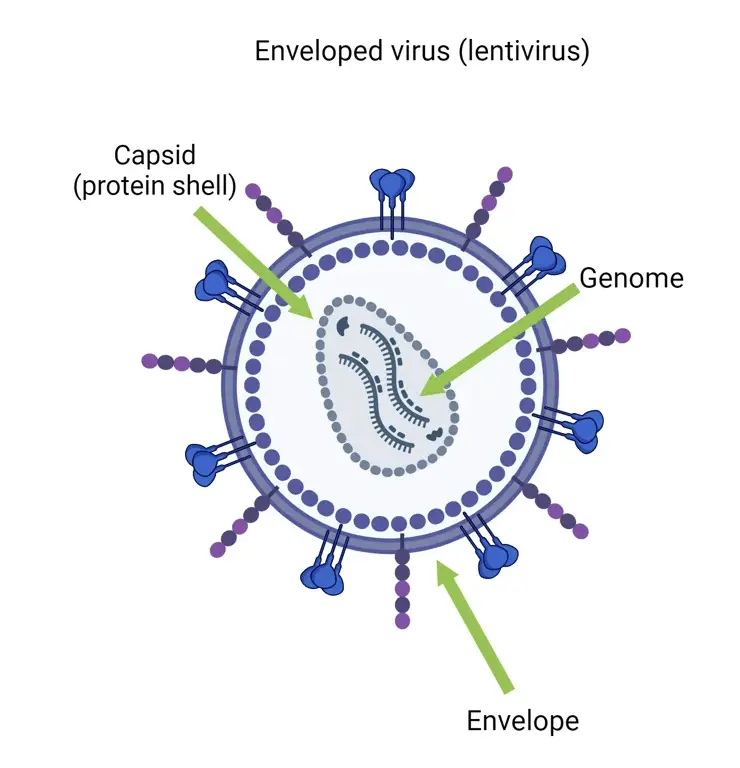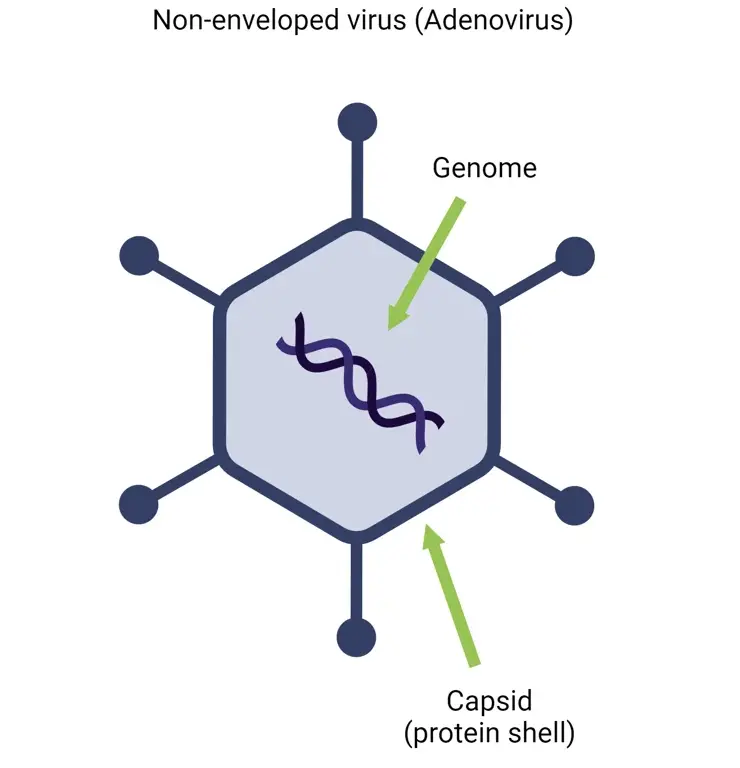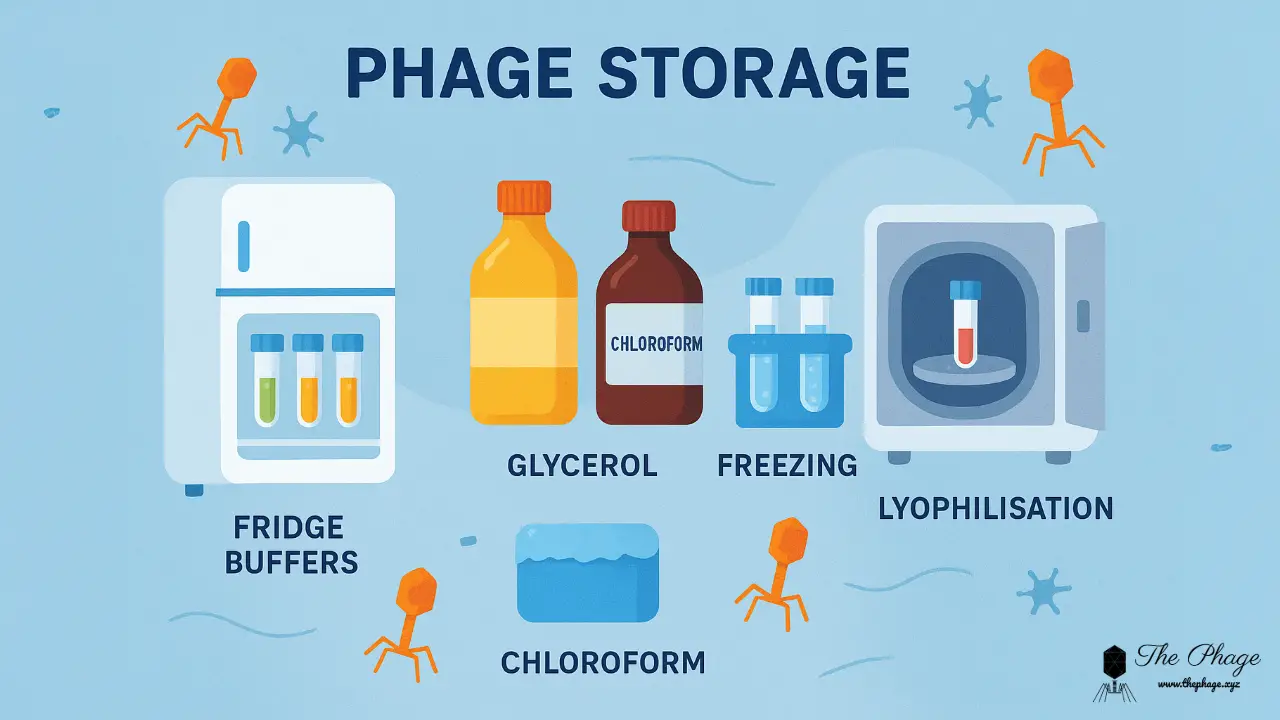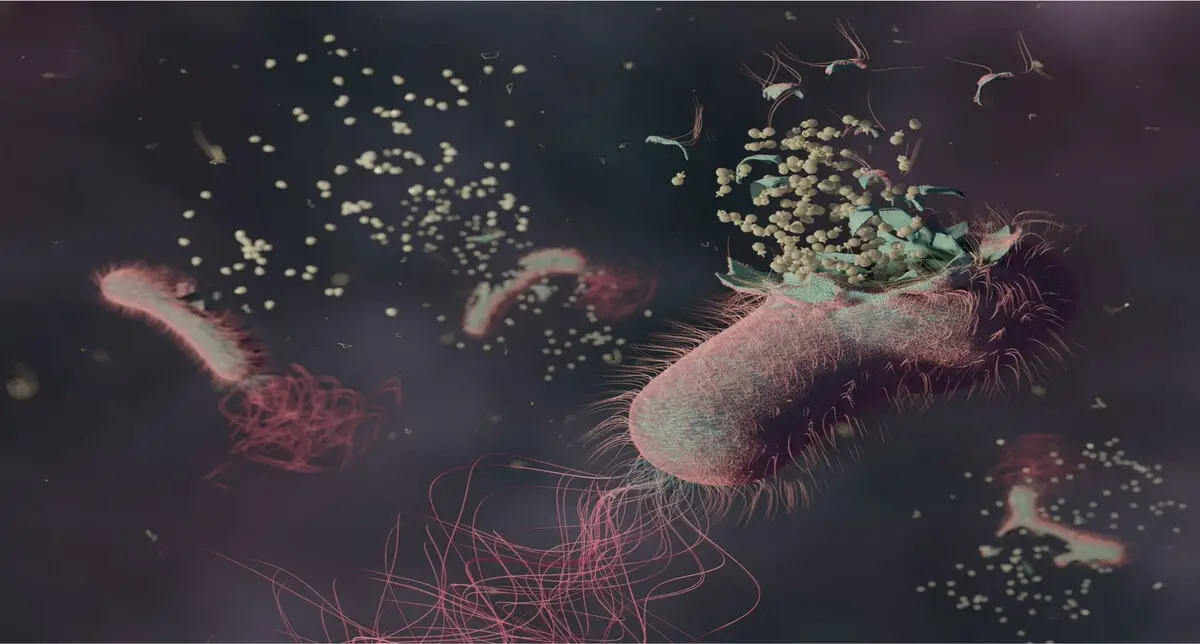
Viruses can classified into two main categories based on whether or not they have a lipid envelope surrounding their capsid. Some viruses bud off from their host’s lipid envelope and are therefore termed enveloped, while others do not and are termed non-enveloped viruses. This classification is crucial for understanding their behaviour, their interaction with host cells, and their implications for medical and environmental applications. In this article, we will explore the differences between these two types of viruses.
Basic Definitions: Enveloped vs. Non-Enveloped Viruses
Enveloped Viruses: Enveloped viruses are distinguished by their outer lipid bilayer membrane, or envelope, which is derived from the host cell’s membrane. This envelope surrounds the viral capsid, which itself encases the viral genetic material (DNA or RNA). The envelope often contains viral proteins that are crucial for the virus’s ability to attach to and enter host cells.
Non-Enveloped Viruses: Non-enveloped viruses, also known as naked viruses, lack this lipid envelope. Instead, they are protected by a protein shell known as the capsid, which encases the viral genome. The absence of an envelope means that non-enveloped viruses often rely on different mechanisms to infect host cells and are generally more resistant to environmental stresses compared to their enveloped counterparts.
Structure and Function of Enveloped Viruses

The structure of enveloped viruses includes:
- Capsid: A protein shell that encloses the viral genome.
- Envelope: A lipid bilayer derived from the host cell membrane, which contains viral proteins essential for binding and entering host cells.
Examples of Enveloped Viruses:
- Acholeplasma virus L2 (phage): It’s a temperate bacteriophage infecting Acholeplasma laidlawii, leaves the cell by bulging off with part of its membrane instead of lying the cell. L2 is classified under family Plasmaviridae by the ICTV.
- Influenza Virus: The influenza virus has an envelope that includes hemagglutinin and neuraminidase proteins, which are crucial for attachment to and release from host cells. This virus is responsible for seasonal flu outbreaks and can be sensitive to environmental conditions.
- Human Immunodeficiency Virus (HIV): HIV has a complex envelope with glycoproteins that facilitate its entry into T-cells, leading to the eventual immune system compromise seen in AIDS.
Structure and Function of Non-Enveloped Viruses

The structure of non-enveloped viruses includes:
- Capsid: A robust protein shell that provides protection to the viral genome.
- No Envelope: These viruses do not have an outer lipid layer.
Examples of Non-Enveloped Viruses:
- T4 bacteriophages: have a complex structure with a head (capsid) and tail. This phage infects bacteria by attaching to the bacterial cell wall and injecting its genetic material directly into the host cell.
- Norovirus: Known for causing gastroenteritis, noroviruses are resilient to harsh environmental conditions, including heat and desiccation, due to their lack of an envelope.
- Adenovirus: This virus causes respiratory infections and is notable for its stability in various environments.
Key Differences and Implications
1. Virulence and Infection Mechanisms:
- Enveloped Viruses: Tend to be less virulent because they often do not cause cell lysis immediately. Instead, they use the host cell’s membrane to form their envelope and exit the cell without necessarily causing cell death. This allows them to evade the host immune system more effectively.
- Non-Enveloped Viruses: Typically more virulent because they often cause cell lysis, leading to more significant tissue damage.
2. Environmental Stability:
- Enveloped Viruses: Generally more sensitive to environmental conditions such as heat, pH changes, and disinfectants. External factors can easily disrupt the lipid envelope, which can inactivate the virus.”
- Non-Enveloped Viruses: More resilient to environmental extremes and can persist on surfaces and in various environments longer than enveloped viruses.
3. Medical and Environmental Applications:
- Enveloped Viruses: Their susceptibility to environmental conditions can be advantageous in developing vaccines and treatments. For example, vaccines for influenza and HIV aim to elicit an immune response against the viral envelope proteins.
- Non-Enveloped Viruses: Their stability makes them challenging in disinfection and control, but also useful in developing antiviral agents that target their robust capsid structures.
Take Home: Key concepts about enveloped and non-enveloped viruses
Scientists broadly categorize viruses into enveloped and non-enveloped types based on whether they possess a lipid envelope surrounding their capsid. Enveloped viruses, like HIV and the influenza virus, acquire their outer lipid layer from the host cell membrane, making them more susceptible to environmental factors but also enabling them to evade the immune system more effectively. In contrast, non-enveloped viruses, such as norovirus and adenovirus, lack this lipid envelope, resulting in greater resilience to harsh conditions but often causing more immediate damage to host cells through cell lysis.
Understanding these differences is crucial for developing effective medical treatments, designing vaccines, and implementing infection control measures. As we explore these viral categories, we gain deeper insights into their behaviour, interactions with host cells, and their broader implications for human health and the environment.
Have you liked what you have read? Click here to read more related content like this one, and also join our community by following the phage on X(formerly Twitter), Facebook, and LinkedIn pages. For a more up-to-date article on enveloped and non-enveloped viruses, click here.



Leave a Reply
You must be logged in to post a comment.